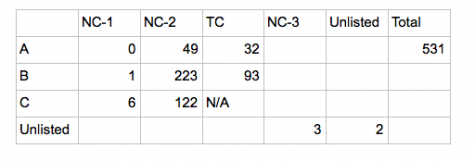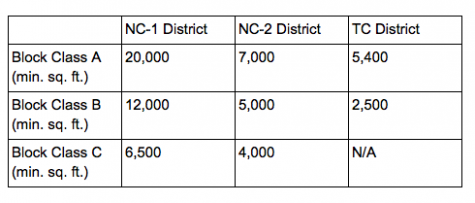Photo by Garen M. via Flickr (CC BY-NC 2.0).
As the time comes for students to secure housing for the 2020-2021 school year, many who seek houses or apartments in the borough start to see a pattern emerge in properties willing to house students.
Generally, off-campus student housing is more expensive and smaller than non-student housing. While this can be seen empirically by the comparison of properties that are and are not willing to rent to students, the pattern holds true with an in-depth look at how student houses are distributed across the borough’s districts and how properties are subdivided into many units per building.
The borou gh is divided into several districts, determined based on location and other qualities. These districts include three neighborhood conservation districts (NC-1, NC-2 and NC-3), as well as a town center district (TC), a commercial service district (CS) and an institutional district (IS) which encompasses West Chester University. NC-1 covers a large corner of the borough next to the university as well most of the borough past Marshall Street. NC-2 sprawls out from the university at one end to the Marshall Street line at the other, and far out to each side. In the middle of town, the TC district separates the NC-2 district, with E Gay St. leading out to the CS district to the East and Hannum Ave., leading to more CS district to the West.
gh is divided into several districts, determined based on location and other qualities. These districts include three neighborhood conservation districts (NC-1, NC-2 and NC-3), as well as a town center district (TC), a commercial service district (CS) and an institutional district (IS) which encompasses West Chester University. NC-1 covers a large corner of the borough next to the university as well most of the borough past Marshall Street. NC-2 sprawls out from the university at one end to the Marshall Street line at the other, and far out to each side. In the middle of town, the TC district separates the NC-2 district, with E Gay St. leading out to the CS district to the East and Hannum Ave., leading to more CS district to the West.
Within these districts, the borough is segmented further into “blocks.” These blocks are independently owned parcels of land, often apartment buildings, restaurants, houses and businesses. From the borough’s zoning map, it is clear that the NC-1 district has the most spacious blocks — with the TC and, to a larger degree, the NC-2 district packing smaller blocks more tightly together.
A good way to see how disproportionately small properties are in the NC-2 and TC districts as compared to the NC-1 district is to look at the Block Class system for each district. Each block in a district is assigned a class, with A being the largest blocks, B being the second largest and so-on. The first graph is a chart of the minimum area in square feet for a block of each class among each district.
The second graph is a graph of the distribution of student housing units in the borough, based on the most recent data set provided by the borough’s official website.
While this chart shows an overwhelming number of student housing being built in the tightest quarters and on the smallest properties— the B and C class in the NC-2 district and the B class in the TC district — the divide widens further when one factors in the number of student “units” built on each property. The larger the block, the more units it is split into. Dividing the number of total living units in each class and district by the number of properties in the respective category levels any advantage the A-class properties might have.
Nearly 72% of student units are in the NC-2 district, which can be explained to a degree by its proximity to the university. What’s harder to justify is the 0.8% of units in the NC-1 district, which is just as close, sharing a border with the university.
So, if student housing is disproportionately built in denser zones and either on smaller blocks or larger blocks subdivided into many units, it would follow that the housing is more affordable as a result. While anyone who has looked for housing in the borough can tell you that student housing is generally more expensive than comparable non-student housing, average rents can tell us roughly how much more expensive. RentCafe.com tells us that the average monthly rent for a West Chester apartment is $1,566, while Business Insider puts the average rent for a student apartment at $2,292.
The borough has shown resistance towards allowing more off-campus student housing and WCU has announced that there are no current plans for the expansion of on-campus student housing. With attendance at WCU rising every year, these policies beg the question: where are these new students expected to live?
Brendan Lordan is a third-year student majoring in English and minoring in journalism. BL895080@wcupa.edu.


